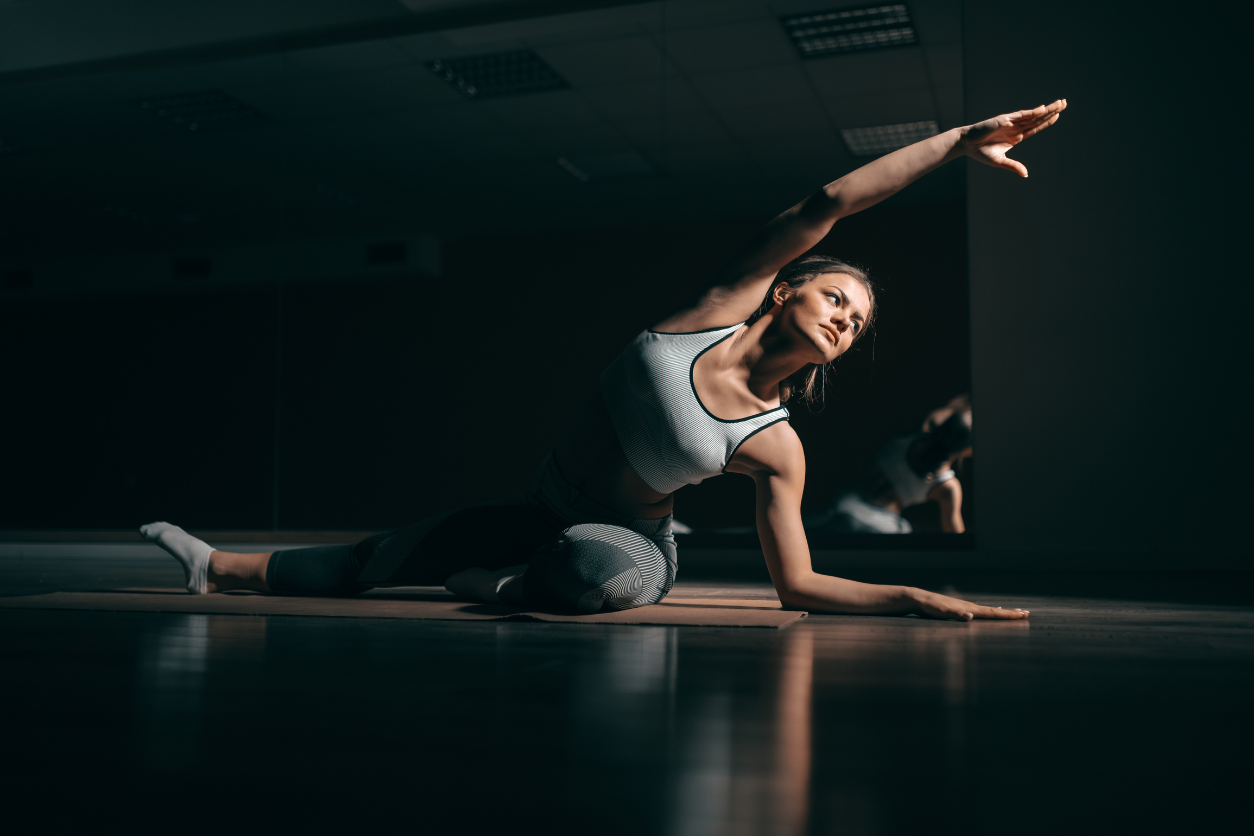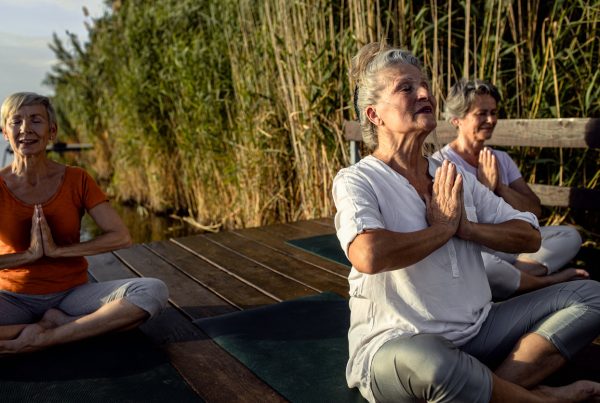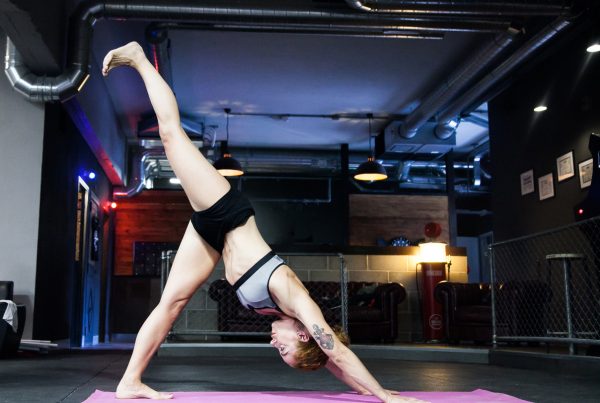Five game-changing ways yoga unlocks athletic performance and how an evidence-based approach to yoga can transform fitness potential with Hayley Winter
With the Paris Olympic Games underway, the world is witnessing the best of human performance. These athletes and their coaches have dedicated years to unlocking their full fitness potential. Now, it all comes down to those crucial moments – right down to the wire. In my 30 years as a yoga sports scientist, I’ve seen a shift in how yoga is perceived in sports. Yet, many in the strength and conditioning field still view it as a set of challenging postures and hour-long vinyasa flows. So how can yoga truly transform athletic performance? In this article, I share five evidence-based fitness strategies, drawn from seven years of case study research.
1. Awareness: Unlocking your nervous system superpower
“Without paying attention, you miss the chance to change,” says Leon Taylor, Olympic medallist, BBC Sports commentator for Olympic diving, and yoga teacher. Awareness and the nervous system go hand in hand. Every movement and sensation happens through the nervous system. How you prepare and engage the nervous system is the essential foundation from which all stable and fluid movement can occur.¹ The arrival phase of a yoga class or training session is where the physiological and biomechanical preparation of your clients begins.
By focusing on sensory feedback, you can tap into what we call your nervous system superpower. This involves understanding and feeling the subtle cues your body provides, enhancing your physiological, biomechanical and biochemical preparation. It’s like having an internal guide that optimises every movement and breath, preparing you for peak performance.
Practice tip: Centre and anchor your nervous system: Simple, effective techniques exist to centre and anchor your nervous system. For instance, encourage stomping, tapping, shaking out limbs and making sounds to release tension. This not only gets kinetic energy flowing but also introduces a sense of playfulness – a great way to relieve stress!
2. Breath: Your performance advantage
Breathing might seem basic but, in sports-specific yoga, it’s a significant performance enhancer. We apply a modern scientific approach to yoga, which is evidence-based and tailored to the demands of modern athletes. Our research shows that breathing impacts athletic performance significantly, yet it’s often overlooked in traditional training.
Each sport has unique respiratory demands. For example, the breathing pattern for swimming differs from that needed for running. Understanding these needs is vital for a safe and effective yoga session. Integrating breathwork into your routine lays a stable foundation for fluid movement and provides athletes with a personalised breathing strategy that boosts performance.
Practice tip: Enhance your breathing for better performance: Here’s a simple technique that is beneficial for runners – and really, for any sport.
This method helps shift the focus to diaphragmatic/abdominal breathing, which can enhance respiratory strength and endurance over time. Try this:
-
- Lie on the mat with your legs bent.
- Place a block under your head.
- Take a second block between both hands and playfully brush it from side to side and around your abdomen while breathing freely. This creates sensory awareness in the area.
- Remove your hands, letting your palms face upwards, and breathe into the area where you feel the block on your abdomen.
This technique helps promote deeper, more effective breathing, enhancing your overall performance.
3. Movement: Efficient, safe, fluid and economical
Movement in yoga is more than exercise; it’s a language that integrates the nervous system, connecting mind and body. Adopting a new movement vocabulary through sports-specific yoga adds playfulness and awareness to your training. It involves moving efficiently and safely, using force and control with structural integrity. The success of my approach is on integrating bite-sized yoga sequences into any gym setting. A 15-minute custom yoga session, delivered regularly with a clear performance objective, consistently yields proven results!²
Practice tip: The slower you go, the stronger you get: Embrace slower movements, especially during transitions, to engage smaller postural muscles, which are vital for building strength.
4. Recovery: Where strength of mind and body flourish
Recovery is crucial – it’s when the muscles, nervous system and overall health rejuvenate and strengthen. Just like interval training needs breaks, so does the brain and body. Recognising the need to rest and recharge is essential for optimal performance.
Practice tip: Make more time for rest: Consider reducing the number of postures in your sessions to allow more time for rest. This approach is incredibly nourishing for the nervous system and is highly appreciated by clients. And I can testify that an intentional recovery session is successful even in an Olympic weightlifting gym!
5. Less strain, more gain: Your marginal advantage
A ‘less is more’ approach through sports-specific yoga promotes a shift towards a more integrated and mindful method. This approach focuses on quality over quantity, respecting the body’s limits, and making incremental gains without overstraining.
Practice tip: Listen to your body: Move slower and pay attention to the signals your body gives you. This mindfulness can prevent injuries and enhance performance, especially when aiming for personal bests.
Dispelling the myth about being ‘good enough to do yoga’
The idea that you need to be flexible to do yoga or that yoga is all about Downward Dog is a myth – and one that often turns athletes off from taking a class. Our research indicates that the biggest gains often come from those who are less traditionally ‘fit’, providing them with unexpected benefits. By integrating these five key areas in easy, bite-sized ways into your practice or training, you will reap unexpected rewards!

Hayley Winter
Hayley Winter (BWY Dip, ERYT-500, YACEP, SYT) is the founder of the Institute of Yoga Sports Science® (YSS – accredited with the BWY). For almost 30 years, she has worked as a yoga educator and yoga sports scientist. Hayley specialises in sports-specific yoga, biomechanics, movement science, and provides continuing education and advanced yoga teacher training. In 2010, Hayley co-developed a research method to study yoga’s impact on athletic performance. Hayley authored the Yoga Sports Science syllabus and co-created The Yoga Sequencing Solution online course and The Yoga Sequencing Playbook with Annelize Ferreira.
Insta/FB: @yogasportscience
Experience how yoga is a game changer for athletes! Join Hayley for an interactive online workshop on 10 August 2024. Dive deeper into yoga and sport with a special bonus from Leon Taylor, Olympic Silver medalist, yoga teacher, and BBC sports commentator. Use the discount code BWYSPORT24 at checkout to save £20.
References
- Winter H & Ferreira A (2023), The Nervous System: Yoga Sequencing Playbook, Published by the Institute of Yoga Sports Science®. (Page 9) Module 2, Unit 1, ‘The Yoga Sequencing Solution’. 50-Hour Online Course.
- Winter H (2019), Yoga for Athletes 40-Hour Online Course, The Institute of Yoga Sports Science®, Unit 2 ‘The Science of Sequencing’.
Want to read more about yoga for sporting performance? Check out this post on sport specific yoga on the FitPro blog







